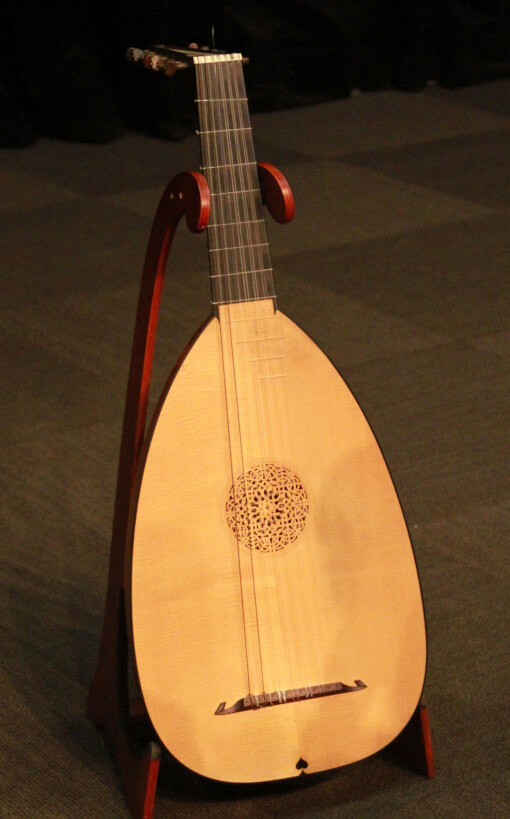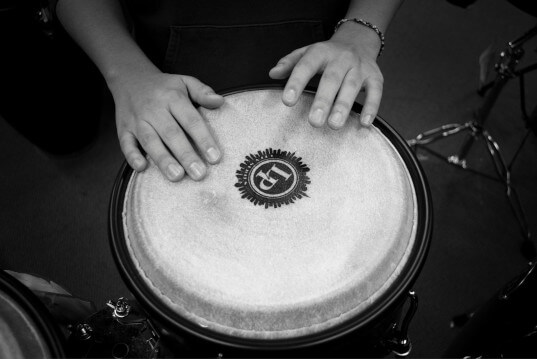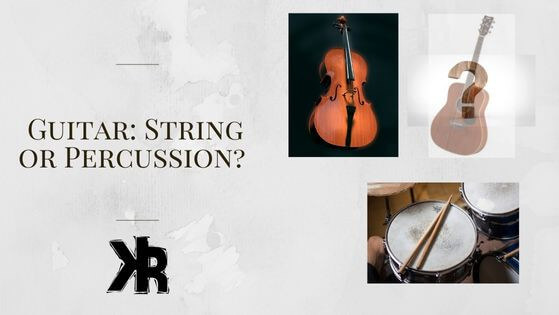Table of Contents
The guitar is a remarkable instrument! It’s an instrument beloved across the globe and has made a splash in various music genres. From the structured elegance of classical tunes to the heady intensity of rock and metal.
It’s a tool that unlocks a rainbow of musical expressions. But wait, let’s pause for a moment, have you ever pondered over the nature of this instrument? Is the guitar a string or percussion instrument?
Whether you are a seasoned musician or a beginner. This article will provide insight into the inner workings of this iconic instrument.
Is The Guitar A String Or Percussion Instrument?
The guitar is a stringed instrument. This is because it produces sound through the vibration of strings. A guitarist uses their fingers or a pick to pluck or strum the guitar’s strings. When this is done, a pitch is produced and amplified by the guitar body.
The musician plays notes by pressing down on the strings at specific points on the fretboard. This is the cause of the different pitches. The sound is then amplified by the body of the instrument, which is typically made of wood.
The sound of the guitar is recognizable for a variety of reasons. The tone is influenced by the type of strings used and their thickness. The body plays a significant role in determining tone, as does string tuning.
There are different materials and shapes which can produce many tones. The sound is also influenced by the way the musician plays the guitar. This includes the techniques used.
Overall, it’s a versatile instrument that can produce a wide range of sounds. The bright, twangy tone of a hollow-bodied electric guitar is one of them. The warm, mellow tone of an acoustic guitar is another.
But the guitar has the ability to fit into many different musical styles and genres. This is possible thanks to the many different types which can include, 6, 7, and even 12 strings.
What Is A String Instrument?
What is a musical instrument that produces sound through the vibration of strings? Well, this would be called a string instrument. They can be classified into several categories. They include bowed, plucked, and hammered.
| Bowed | Violin and Cello | They produce sound by drawing a bow across the strings. |
| Plucked | Guitar and Ukulele | They make sounds by plucking or strumming the strings with fingers or a pick. |
| Hammered | Piano and Harp | Their tone is made by striking the strings with hammers or other instruments. |
Strings are typically made of materials such as gut, metal, or plastic. They are stretched across a frame or body to create a specific pitch when they are plucked or strummed.
There are many types of string instruments, each with its own role in music. Violins and cellos are common in classical music, guitars are versatile across many genres, and instruments like the ukulele and banjo have their own sounds.
Different music genres utilize these instruments in various ways. Jazz might feature the smooth sounds of a double bass, while rock often includes the electric guitar.
Folk music typically uses acoustic string instruments, and classical music often involves a range of instruments like violins, violas, and cellos.
When played solo, each instrument can produce melodies that are expressive and evocative. A solo violin can convey emotion, a cello can offer depth, and a guitar can provide a range of tones from gentle to powerful.
In ensemble settings such as orchestras or bands, these instruments come together to create rich harmonies and complex musical textures.
Each string instrument has its own playing techniques, but all rely on the vibration of strings to produce sound. This vibration is the essence of how these instruments contribute to the world of music.

Characteristics of Percussion Instruments
Percussion instruments produce sound through the use of non-vibrating objects. This includes sticks, mallets, or hands used to strike, scrape, or shake a surface or object. Percussion instruments are typically classified as non-pitched.
Like a string or wind instrument, they cannot produce a certain pitch or melody.
Instead, they are intended to give music a rhythm or to provide color and texture.
Drums, cymbals, maracas, tambourines, and triangles are some common percussion instruments.
Numerous musical genres commonly incorporate percussion instruments. This consists of pop, rock, metal, jazz, and classical music.

Does the Guitar Have Percussive Elements?
Yes, it does! The guitar’s percussive elements are unlocked by hitting or plucking motions. This is done on the body or the strings of the guitar to create a rhythmic effect. These methods can give the music additional layers of complexity and texture.
They can be used in both lead and rhythmic playing. On the guitar, percussive methods including slapping, tapping, and palm muting are employed.
- Slapping is used on electric guitars more often. It involves striking the strings with the side of the thumb. Sometimes even the edge of the hand which creating a percussive sound. This technique is often used in funk and fusion styles of music.
- Tapping is an interesting technique. It involves using the fingers or a pick to repeatedly strike the strings in a specific pattern. This often creates a fast and intricate melody. This technique requires a high level of skill and coordination and is often used in rock and metal music.
- Palm muting involves pressing down on the strings with the palm of the hand while playing. This creates a muted, dampened sound. This technique can be used to add a percussive element to the music. It can be varied in intensity to create different feels.
Overall, the percussion elements of the guitar add complexity to the music. You can use them in a variety of musical styles.
6 Tips For Playing Guitar With Percussive Elements
Playing the guitar with percussive elements can add depth to your music. Here are a few tips for incorporating percussive techniques into your guitar playing:
- Use your fingers to play the strings. Rather than using a pick, try your fingers to pluck or strum the strings. This allows you to add more percussive elements to your playing. Such as adding accents or ghost notes by tapping the strings with your fingers.
- Experiment with alternate picking techniques. Alternate picking involves changing between upstrokes and downstrokes. However, you can also use alternate picking techniques with your fingers. This is done by using different fingers to pluck the strings in a rapid, alternating pattern.
- Explore different strumming patterns. Consider adding percussion to your strumming patterns in addition to just the conventional ones. Using a combination of upstrokes and downstrokes, this is quite easily accomplished. Or by using your fingers to tap or slap the strings.
- Use the body of the guitar as a percussion instrument. You can add percussive elements to your playing by tapping, slapping, or muting the body of the guitar. This can be done with your hands or other objects.
- Experiment with different tunings. Your guitar’s tuning can be changed to create various sounds. This is a fantastic way to add percussion to your playing. Using an open tuning allows you to play percussive rhythms. By strumming across the strings, you can do some creative things. And all without fretting any notes.
- Use palm muting. This involves resting the palm of your strumming hand on the strings near the bridge of the guitar. This produces a softer, percussion-like sound. It’s a method frequently utilized to produce a heavier, more aggressive sound in genres like rock and metal.
Experiment with ways to use the guitar as a string instrument. But with percussive elements. This has the potential to produce some great sounds and add new techniques to your tone.
Conclusion
It’s amazing how versatile the guitar is! It has numerous features and can be used as a percussion or string instrument. The widespread use can be attributed to its versatility for different sounds.
Do you consider the guitar to be a percussion or string instrument? Whatever the case, there is no doubting its capacity to produce stunning and emotional music.
FAQs
What is it called when you hit a guitar?
This is referred to as strum slap, or guitar percussion. Whenever you incorporate a beat by striking the guitar, you are adding percussion.
This works best on an acoustic guitar thanks to the hollow body. The strum slap is slightly amplified along with the vibration of the strings.
What are the main percussion sounds on a guitar?
There are many ways to get percussive sounds on the guitar. The main one is by striking the body of an acoustic.
But you can also hit the strings in certain ways, as well as mute them entirely. Or, use certain tempos and strum the strings to emulate the snare of a drum kit.

